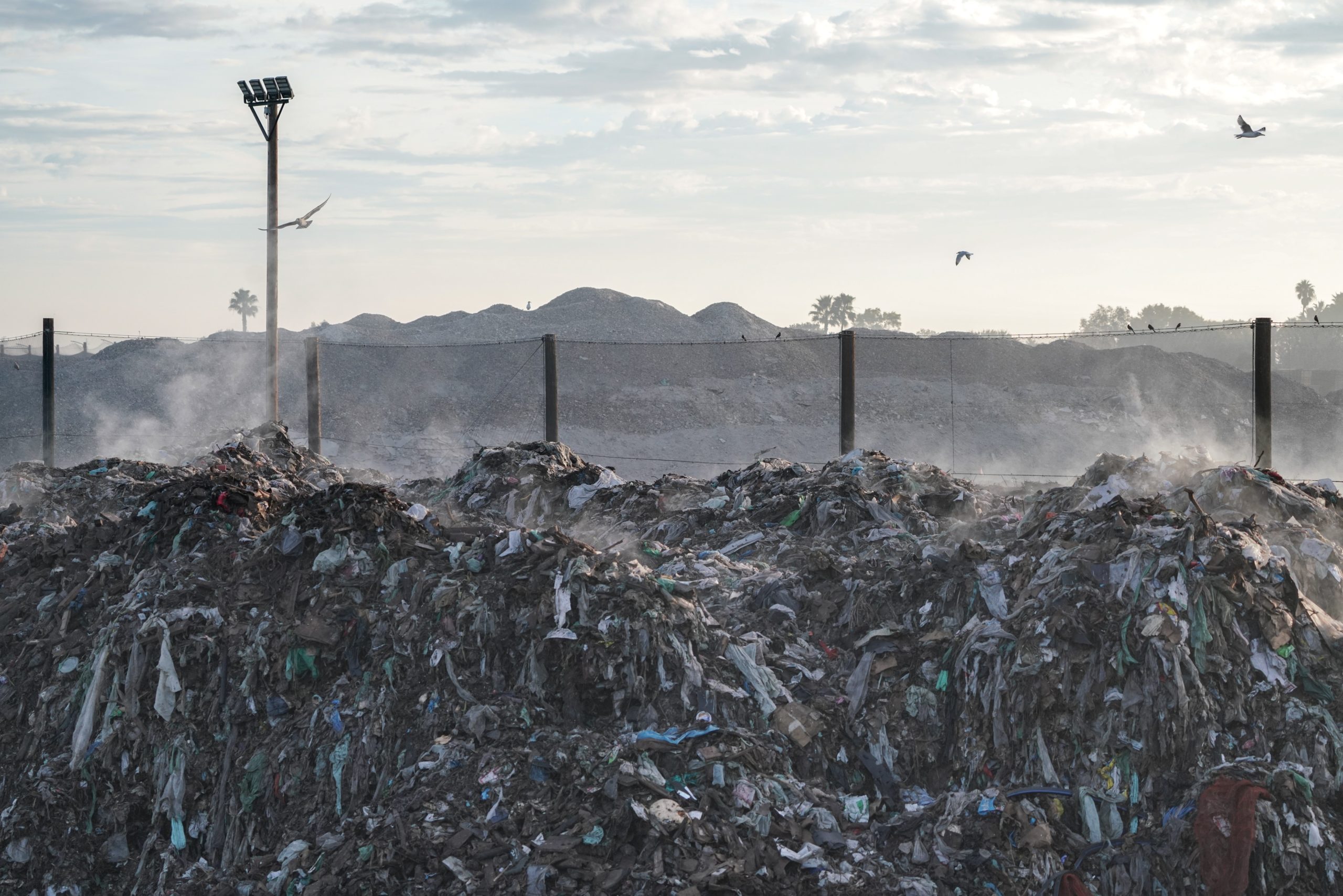
Representational Photo by Katie Rodriguez on Unsplash
In 2020, the waste sector—municipal solid waste and wastewater—accounted for almost 20 percent of all human-related methane emissions—the third largest source globally, after enteric fermentation, and oil and gas.
Of the various landfill gases (LFG), ammonia, sulfides, methane, and carbon dioxide are of maximum concern. Methane comprises nearly 50 percent of the emissions from landfills. The waste sector has a clear and urgent need for decarbonization strategies that swiftly reduce emissions.
Q1. How does mismanaged municipal solid waste lead to methane emissions?
When MSW is first deposited in a landfill, it undergoes an aerobic decomposition stage when methane and other gases are generated. Then, typically within less than 1 year, anaerobic conditions are established and methane-producing bacteria begin to decompose the waste and generate methane.
In recent years, there is a growing awareness and concern in the waste sector over how methane and other gases and odors are harming the environment through air, soil, and water.
Q2. Why are methane emissions from landfills/dumpsites so harmful to the environment?
Methane is a potent greenhouse gas that affects climate directly but also indirectly through its role as a key precursor to the development of tropospheric ozone on human health, crop yields, and the quality and productivity of vegetation.
Methane has an atmospheric lifespan of just around 12 years. Although it has a significantly shorter lifetime in the atmosphere than carbon dioxide (CO2), it is far more effective at absorbing radiation. Methane’s effect on climate change is 86 times more than CO2’s per unit of mass over a 20-year period and 28 times greater over a 100-year period.
Methane gas is also explosive when its proportion in the air is in the range of 5.3–13.9 percent and results in frequent fires at dumpsites and landfills.
Q3. How much methane is generated in landfills/dumpsites?
More than a quarter of methane emissions in Mumbai originate in landfills, an international study has found. For the national capital Delhi, the figure is 6 percent. Another study conducted on the Ghazipur landfill area of Delhi estimated that methane emissions flux was 18 mg/m2/h (lowest, in winter) and 264 mg/m2/h (highest, in summer).
Another study by researchers from IIT Delhi and JNU reported the total methane emissions contributed by the three dumpsites in Delhi (Bhalswa, Ghazipur and Okhla) in 1984–2015 were 311.18, 779.32,1288.99 gigagram (Gg) per annum.
While accurate data on methane emissions are limited, as per some estimations, global municipal solid waste methane emissions could nearly double to 60 teragrams per annum by 2050, a study suggested. A teragram is equivalent to 1,000,000 tonnes.

Q4. How can methane emissions from landfills be reduced?
Solutions to reduce methane emissions from landfills include reducing organic waste and installing things like covers and gas collection systems at landfills. Some other solutions include:
- Separate and treat biodegradable municipal waste, and turn it into compost or bioenergy
- Upgrade wastewater treatment with gas recovery and overflow control
- Improve anaerobic digestion of solid and liquid waste by the food industry
- Upgrade primary waste water treatment
- Divert organic waste from landfills
- Collect, capture and use landfill gas (LFG)
Q5. What is the energy potential of LFG?
LFG is known to have good energy potential and the use of LFG as an energy source is an established technology. Instead of escaping into the air, LFG can be captured, converted, and used as a renewable energy resource. Using LFG helps to reduce odors and other hazards associated with LFG emissions, and prevents methane from migrating into the atmosphere and contributing to local smog and global climate change. In addition, LFG energy projects generate revenue and create jobs in the community and beyond.
Q6. Are there any rules to monitor LFG recovery in India?
The existing MSW management rules and amendments stipulate that an LFG control system be installed including a gas collection system at the landfill sites. Further, the LFG from the site shall be utilized for either direct thermal applications or power generation as per the practicability; or else, LFG shall have to be flared. If LFG utilization or flaring is not possible then passive venting is mandatory. However, LFG recovery has still not been picked up as a technique in India due to the lack of formulation of specific legislation on LFG recovery and its utilization.
To date, there exists no national action plan by the Government for LFG recovery from more than 7000 existing landfill sites in India. Very few landfill sites have LFG to energy facilities on-site.
Q7. How viable are such energy projects in India?
The financial viability of LFG extraction projects depends on many factors, including the capital costs for the gas collection system, power generation equipment and/or gas pipelines or power lines, costs of operation and maintenance, the tariffs paid for electricity or natural gas generated, the eligibility for CDM carbon credits, and any capital subsidies available in the form of grants or loans. Experience from the United States shows that even with no “green” tariffs or government subsidies, direct use of LFGE (Landfill Gas to Energy) can still be financially attractive when users are located nearby. In less developed markets, initial costs are likely to be high due to the need to import equipment and expertise, and government subsidies will probably be required to establish the industry.



